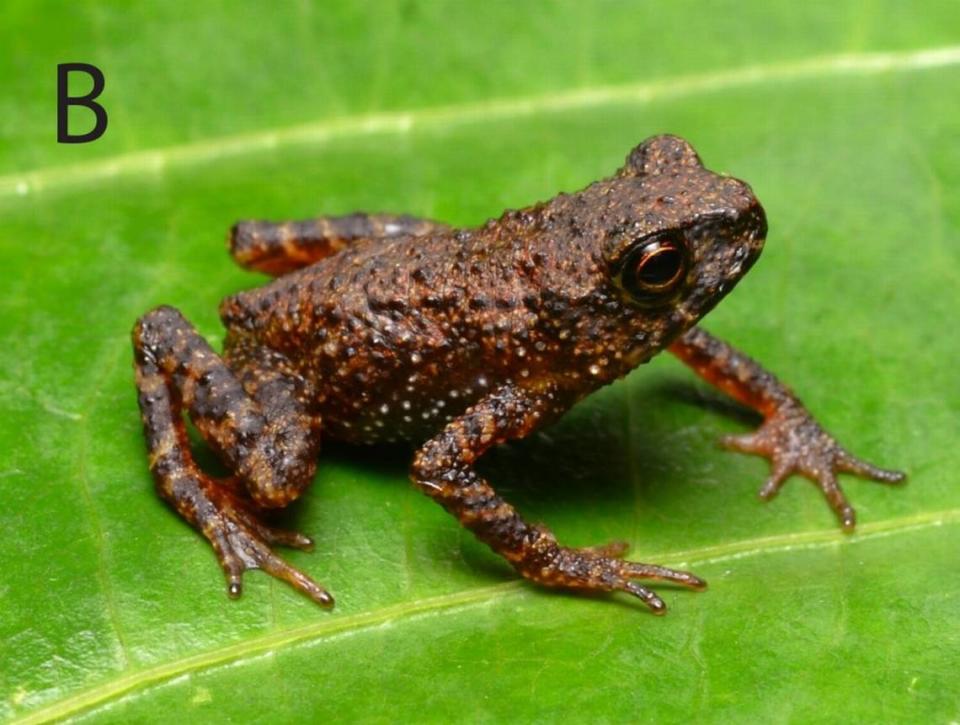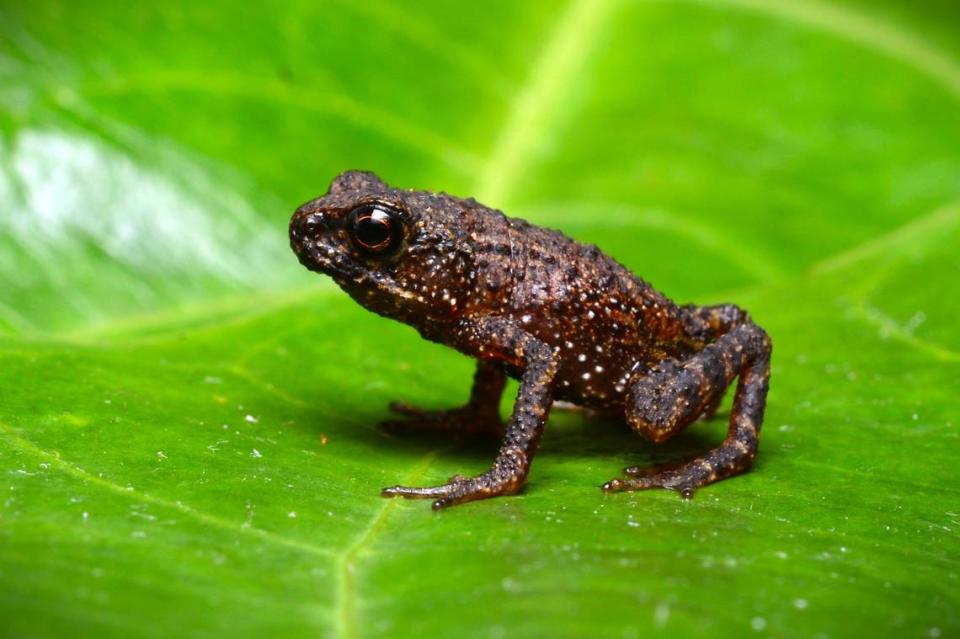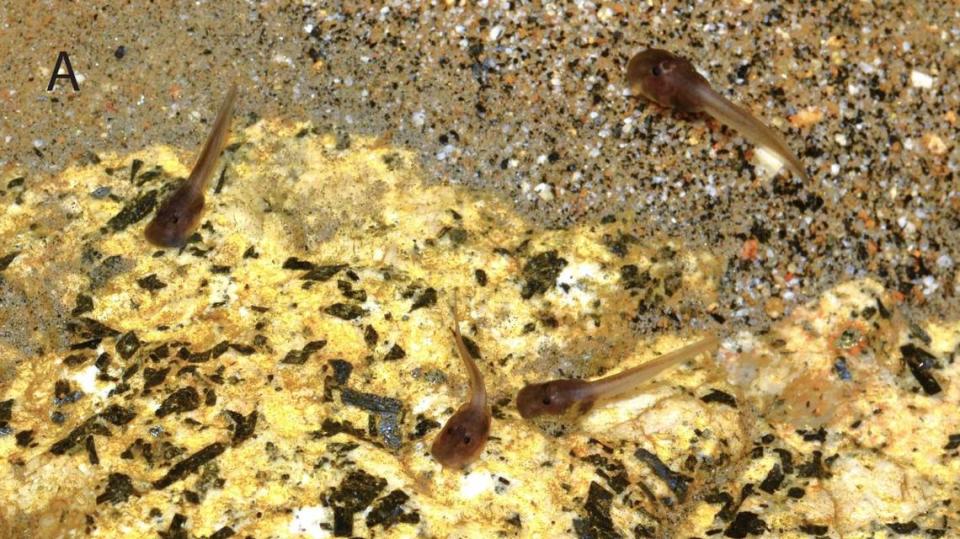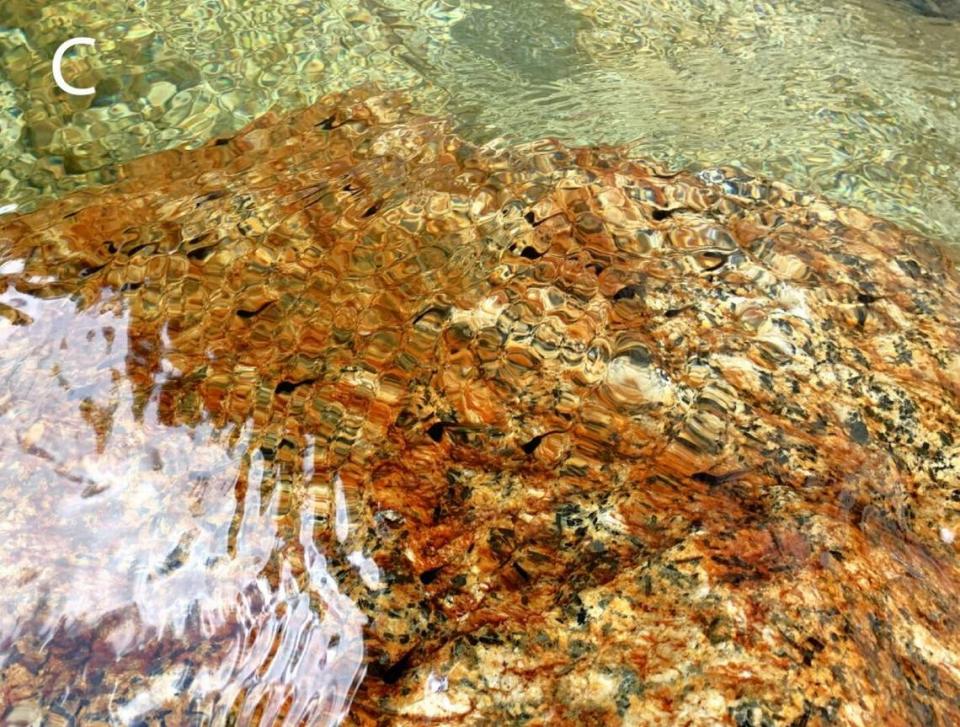Mountain creature — feared extinct after a quake — found swimming in Malaysia. See it
Three hours into their hike, a team of scientists in Malaysia had found nothing. In a way, that was expected because they were looking for a mountain creature that had been feared extinct for several years.
But that was about to change.
An earthquake shook Borneo’s Mount Kinabalu in 2015, causing “massive landslides” and “extensive damage,” according to a study published May 6 in the peer-reviewed journal Zootaxa.
Part of the damaged area included the only known habitat of a “cryptic” amphibian known as the Mesilau stream toad, or Ansonia guibei, researchers said. A search for the Mesilau stream toad in 2017 found nothing, leading experts to predict that the earthquake had “caused population declines of at least 80% or even the potential extinction of the species.”
A team of researchers led by Evan Quah decided to search for the species again in 2023 over the course of several months, the study said.
During one of these hikes, they spotted a reddish-brown toad “crawling beside a drain,” Quah told McClatchy News via email.

“I was super excited when I found it because we had been hiking for 3 hours with no luck initially,” Quah said. “I immediately recognized what it was, and we celebrated our find!”
The roughly 1-inch-long toad was a juvenile Mesilau stream toad, the study said. A photo shows the bumpy mountain animal.

Researchers also found several Mesilau stream toad tadpoles swimming in a river. The tadpoles were identified by their body shape and jaws, the study said. A photo shows these tadpoles.
No adult Mesilau stream toads were found, but the discovery of tadpoles “indicates the species survives and is breeding,” researchers said.

“The rediscovery of Ansonia guibei is a cause for much excitement and rejoicing,” the study said. Like other related toads, the Mesilau stream toad appears to be “resilient.”
The discovery also “gives us hope that populations of other amphibian and reptile species that were affected by the earthquake may be recovering as well,” researchers said.
Despite the excitement, Quah emphasized that the Mesilau stream toad is still at risk.

The species likely “suffered a massive population decline” of up to 80% or 90% due to the 2015 earthquake and landslides, the study said. Even still, its habitat “has not fully recovered. Frequent landslides still occur, especially during the rainy season.”
The Mesilau stream toad is considered critically endangered. Follow-up research on the toad is ongoing, the study said.
Mount Kinabalu is on the northern, Malaysian part of Borneo island. This large island in southeast Asia is split between Malaysia, Brunei and Indonesia
The research team included Evan S.H. Quah, Paul Yambun Imbun and Sze Huei Yek.
‘Mysterious’ winged creature rediscovered in Taiwan after 87 years, study says. See it
‘Large’ pregnant creature with ‘heart‑shaped’ spot found in China. It’s a new species
Ocean predator missing since 1800s appears in fishers’ net in Chile. Take a look

